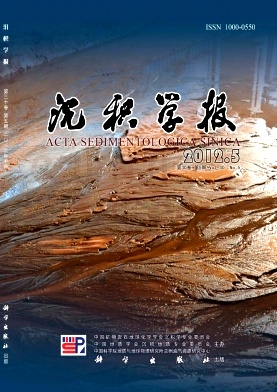Building Geological Knowledge Database Based on Google Earth Software
- Publish Date: 2012-10-10
-
Key words:
- meandering river /
- Google Earth
Abstract: The existing methods for establishing geological knowledge database include dense well pattern anatomy, outcrop anatomy, modern sedimentation anatomy, sedimentary simulation experiment, and so on. The advantages and disadvantages of these methods are firstly analyzed in this article. Then the method of building geological knowledge database by using the Google Earth software is proposed combined with the basic geological idea of "the present being a key to the past". Google Earth is a virtual globe, map and geographic information program that were created by Keyhole, Inc, a company acquired by Google in 2004. It maps the Earth by the superimposition of images obtained from satellite imagery, aerial photography and GIS 3D globe. The steps and basic principals for measuring the meandering channel by Google Earth are introduced, and a series of fundamental data which consist of channel width, pointbar length and its arc length of different areas and different curvatures are measured. The data sheets are made based on the measurements. Furthermore, both the existing empirical formula and the formula obtained by fitting measurement data are analyzed integratedly. The database established by the Google Earth method proposed here is mainly composed of three parts basic measurement data sheets, the macro images and the empirical formulas. Each part has its functions: the basic data provide quantitative modeling data; the macro images provide development features of meandering rivers; while the empirical formulas provide directly available algorithm reference formulas. Case studies of typical meandering rivers in areas of South America and Hailar, and the point bars of lowcurvature meandering river of middle stream and downstream Pearl River are shown here. Results of the case studies demonstrated the feasibility of this method of using Google Earth to establish the geological knowledge database. Statistical analysis of the measured data shows that there are different positive correlations between channel width and point bar length of meandering rivers of different areas and different curvatures. According to the statistical data of meandering rivers in South America and Pearl River, and combined with previous studies, similar positive correlations between channel width and point bar length are found. Fitting correlation coefficient can reach as high as 0.92, indicating that the correlation between channel width and point bar length is universal. According to the fitting of all measured data, correlations under different curvatures are different. There are obvious correlation between channel width and point bar length of meandering rivers when their curvatures are above 1.7, with correlation coefficients higher than 0.85. While the curvature of the meandering river is between 1.4~1.7, the correlation coefficient is around 0.75, and declines when curvature is under 1.4. The result of our research shows that development of point bars is controlled by the curvature of the meandering river. As the curvature declines, the correlation between channel width and point bar length of meandering rivers weakens. The bigger curvature, the easier for large and typical point bars to develop. As we found that not all underground reservoirs are developed in large or typical point bars, we suggest geologists strengthen the study about meandering rivers with curvatures smaller than 1.7, so as to get better prediction of reservoirs, and achieve reservoir geological modeling. Different quantitative formulas are needed for correlations between channel width and point bar length of meandering rivers from different areas and different curvatures. This reflects the "differences in common" characteristic of geological models of meandering rivers. Borrowing ideas from the thought of "training image library" in multiplepoint geostatistics algorithms, we suggest that a meandering river model database should be included within a meandering river geological knowledge database, instead of establishing a single simple geological model. Only by this way, better comparison and prediction of underground reservoir modeling can be achieved. Restricted by data amount and dispersion of all data, correlation coefficients between channel width and point bar length of meandering rivers in South America area are mostly relatively low. The correlation coefficients of meandering rivers don't change very much as curvatures vary among 1.4~1.7 and below 1.4. So the laws of statistics are not only affected by the amount of data, but also influenced by the dispersion of the data. Because the lack of modern sedimentation study or depth measurement tools such as groundpenetrating radars, no empirical formulas of width/ depth ratio are given here. Actually, each method has got its limitations in application. Although the approach proposed in this article can provide good supplement in quantitative and macro holistic aspects of existing database establishing methods, with plenty of quantitative data of meandering channels from different regions and different curvatures, depicted observations of abandoned channels, detailed morphological classifications and numerical fitting of abandoned channels, and instructional prediction of unmeasured point bars, it has limitations of establishing three dimensional models. That is why we finally suggest that comprehensive study of a variety of methods to establish the geological knowledge base should be adopted in practical reservoir modeling.
| Citation: | Building Geological Knowledge Database Based on Google Earth Software[J]. Acta Sedimentologica Sinica, 2012, 30(5): 869-878. |






 DownLoad:
DownLoad: